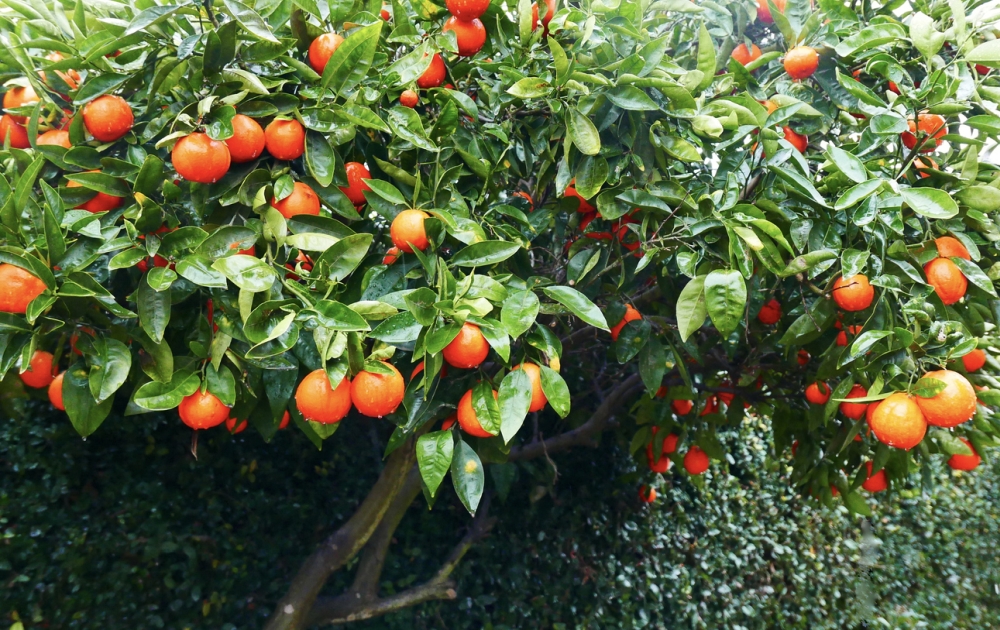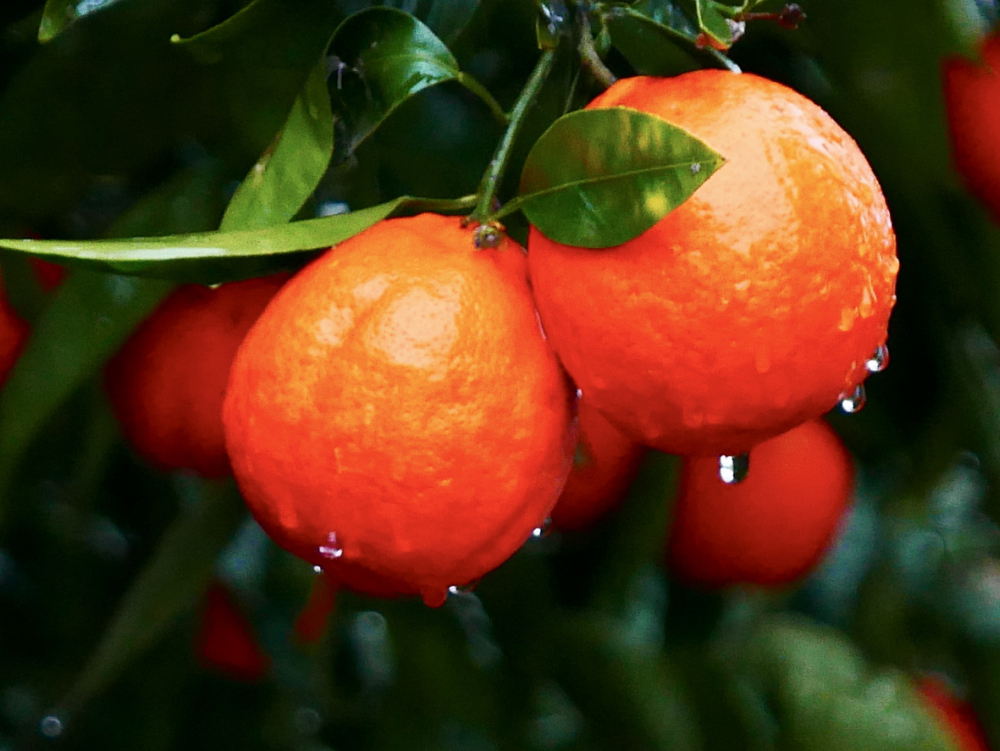Tangelo Tree Care – How To Grow And Harvest Tangelos
Tangelo is the hybrid tree that stole the show from its original parent species. A crossbreed between grapefruits and mandarins, the tangelo fruit is not your typical citrus. The fruit is easier to peel than oranges and has a tarty flavor that makes it ideal for lemonades, smoothies, tea, jam, or any dessert you can think of. Its zest has less of a bite than the lemon but more aromatic than the orange.
And like many citrus fruits, a tangelo is packed with vitamins, minerals, and electrolytes. The ripe fruit has vitamins A, B9, and C. It’s also a rich source of dietary fiber, magnesium, and potassium. So what’s there not to like about a fruit that has it all from a tangy taste to loads of nutrients? The real question should be, how to grow the tangelo tree in your garden? And the answer is right here. Read on to find out all you need to know about planting, caring for, and harvesting this hybrid citrus tree.
Tangelo Tree at a Glance
Although general wisdom dictates that you should approach hybrids with caution, that doesn’t apply to tangelo. Not just because the tangelo tree has been around for more than a century and has proved its hardiness and worth in different zones. But also because its juicy fruit just has no equal among the citrus family in terms of taste and flavors.
The first tangelo tree came into existence in 1897 thanks to the work of botanist Dr. Walter T. Swingle down in Florida. A year later another botanist, Dr. Herbert J. Webber from Riverside, California also managed to grow a tangelo tree in 1898. They both used a mandarin and a grapefruit to produce this new cultivar which they called Citrus X tangelo.
Best suited for zones 8 and 11, tangelo trees look like any other orange tree. They grow to about 20 to 30 feet high and 25 feet across on average and are evergreen. The leaves are small, elongated, and have a pointed tip. They start light green then turn a pale green as they mature.
Some tangelo cultivars are on the dwarfish side and can be grown in containers. But it’s the fruits that have a distinct shape and taste than your average oranges. They have a knob at the top where they are attached to the stem. Most cultivars are seedless and the pulp is as orange as the peel.
Tangelo Varieties
Of course, the work on developing new cultivars didn’t stop after the first tangelo tree produced its unique fruits. More tangelo varieties have been developed ever since and each has something to offer to your garden. From more dense foliage and shapely canopy to high resistance to diseases and sweeter flavors. Here are some varieties you can try in your garden.
- Orlando: This special cultivar is the result of crossbreeding two grapefruit and mandarin cultivars. It has a much milder taste and flavor than other tangelos. The fruit is more the size of a grapefruit than an orange and is full of juices. You can use it to make juices, jam, and smoothies. The zest of the fruit goes well in most desserts and cakes.
- Ugli: This cultivar accidentally happened on its own when a farmer in Jamaica found the tree with its bizarre-looking fruits growing on his farm in 1917. Using seeds and grafts of sour orange, he managed to improve the cultivar and develop it to the “ugli” fruit we know today. The fruits are small with light-green skin and apricot flesh. The pulp is buttery smooth, juicy, and has better flavors than grapefruits.
- Minneola: A popular cultivar known for its tarty taste and prominent neck. The fruits are also larger than the average tangelo and average about 3 inches in diameter. As with other tangelos, this cultivar is also easy to peel although it has a few seeds. The skin is red-orange when mature and the flesh is bright orange.
- Wekiwa: If you like your tangelo to have a unique color and taste, then this is the cultivar to grow. Known tartly as the “lavender gem”, the flesh of this tangelo is purplish and not as sweet as other cultivars. Some people have grown it in zone 7 with some success due to its tolerance to moderate temperatures.
How to Grow Tangelo
Since tangelo fruits are for the most part seedless, the best way to grow them is by propagating through a cutting or buying a small sapling. Your local nursery most likely will have plenty of tangelo varieties for sale if you’re living in zones 8 to 11. If not, you can always find a good nursery online that has your specific variety.
- Pick a spot in your garden that gets at least 8 hours of sunlight during the growing season. Avoid unsheltered areas that get hammered by strong winds.
- Prepare the soil by removing any debris and weeds. Break the top 12 inches of the soil and mix in plenty of organic materials, aged mature, or homemade compost. Let the soil rest under the sun for a couple of weeks.
- Dig a hole in the soil about three times the diameter of the container the tangelo sapling came in and one and a half times its height. Fill it with water and let the soil absorb the water slowly.
- Cover the bottom of the hole with a 4-inch layer of soil.
- Ease the tangelo sapling out of the container and examine its roots. Untangle any roots and remove damaged ones.
- Place the sapling in the middle of the hole and spread its roots to fill up the hole. Make sure the top of the root ball stays a few inches above the line of the soil.
- Fill the hole with half the soil you took out of it and water it again. This prevents air pockets from forming around the roots and damaging them.
- After the soil has absorbed the water, fill the rest of the hole with the remaining soil.
- Cover the top of the root ball with sand to create a mound around the base of the sapling.
Tangelo Care
If planting the tangelo sapling seems a little unorthodox, that’s because this is a cultivar first and foremost. Its growing needs are a little different from a species that has been around for thousands of years. And just as its unusual planting process, caring for tangelo is also somewhat different. At least until the tree establishes and becomes more independent and self-sufficient.
Soil
Apart from picking a spot in the garden that gets plenty of sunlight, the soil needs to be treated and processed before you plant your sapling. Tangelo trees prefer loose, well-drained, and enriched soil. This gives them a good start and allows their robust root system to grow and spread quickly. So no matter what type of soil you have in your garden, you’ll need to dig up a large hole and mix that soil you dug up with sand and organic materials. Sand is also important to protect the base of the trunk from rot. After planting the sapling, build a mound of sand around its base. It will keep moisture and mulch away from the tree.
Water
After flooding the hole where you plant the young tangelo sapling twice, hold back watering to once a week. These citrus cultivars need about one inch of water a week which is equivalent to 16 gallons. Once they establish after the first year, you can cut down the water to about a half. Always factor in any rainfall and adjust your watering accordingly. During the spring and summer, don’t allow the soil to go completely dry since these cultivars have a low tolerance for drought. If the top three inches of the soil are dry, then you need to water the tree.
Fertilizer
As with other fruit trees, your tangelo cultivar draws plenty of nutrients out of the soil. After a couple of years, even the naturally rich soil becomes depleted. So you’ll need to apply organic compost, aged manure, and homemade fertilizers to keep the tree growing. The best time to feed the tree is in the early spring before the growing cycle. Remove any mulching from around the tree before you apply the fertilizer. Water the soil immediately after. If you prefer commercial fertilizers, then use special citrus formulas for the best results.
Pruning
Mother nature wasn’t very generous with the tangelo tree. The tree’s canopy tends to grow everywhere with little regard for aesthetics. It falls on you to trim the tangelo’s foliage and make it look presentable. In the late winter or early spring, right before the first growth, you can take your pruning shears to the unruly branches of the tree. Your goal is to untangle the branches and improve air circulation inside of the canopy. This also allows more sunlight to flood the inner branches and prevent fungus and mold build-up. If you notice any offshoots growing near the base of the tree, remove them since they waste the tree’s precious resources.
Winter Protection
Although the tangelo tree can handle mild and even temperate temperatures, sharp drops in temperature in the evenings can prove to be problematic for them. If the fall and winter evenings get exceptionally cold and dive below 20 degrees Fahrenheit, then your tangelo needs some extra protection to survive the winter. A blanket around the trunk at night can protect it against the excessive cold. Secure the blanket with a few clothespins and remove it during the day. Don’t use tarp or plastic sheets since they have the same protection against cold weather as a raincoat in a snowstorm. If you grow the tangelo in a pot, move it indoors during the winter evenings.
Harvesting Tangelo
Tangelo ripens between September and December of each year. Luckily, it’s easy to tell when your tangelo fruits are ripe and ready for harvesting. By the time the fruit reaches its full size (around the same size as an orange), it starts to feel too heavy for its size. That’s a sign the juices are becoming sweet. As the skin turns from green to orange, it becomes soft and shiny. Some varieties go soft when ripe, while others remain firm.
The ripe fruits don’t store well and have a short shelf life. So it’s best to eat them fresh, make your juices, jam, smoothies, and store them in the fridge. You can keep the freshly harvested tangelos at room temperature for a couple of days before they begin to lose their flavors and tarty taste.

